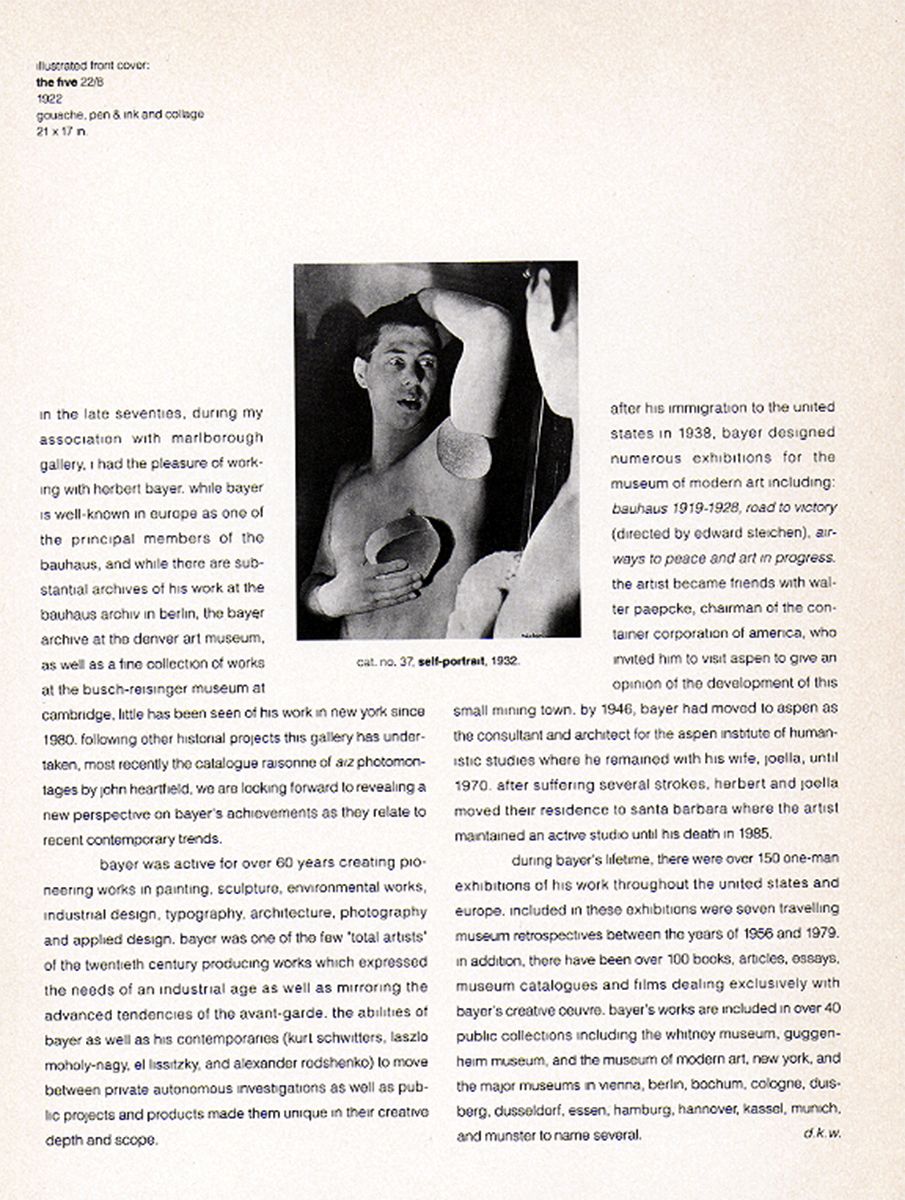Herbert Bayer: Bauhaus & Beyond
April 29 – June 3, 1995
In the late seventies, during my association with Marlborough Gallery, I had the pleasure of working with Herbert Bayer. While Bayer is well-known in Europe as one of the principal members of the Bauhaus, and while there are substantial archives of his work at the Bauhaus Archive in Berlin, The Bayer Archive at the Denver Art Museum, as well as a fine collection of works at the Busch-Reisinger Museum at Cambridge, little has been seen of his work in New York since 1980, following other historical projects this gallery has under-taken, most recently the catalogue raisonne of A/Z photomontages by John Heartfield, we are looking forward to revealing a new perspective on Bayer's achievements as they relate to recent contemporary trends.
Bayer was active for over 60 years creating pioneering works in painting, sculpture, environmental works, industrial design, typography, architecture, photography and applied design, Bayer was one of the few 'total artists' of the Twentieth Century producing works which expressed the needs of an industrial age as well as mirroring the advanced tendencies of the avant-garde. The abilities of Bayer as well as his contemporaries (Kurt Schwitters, Laszio Moholy-Nagy, El Lissistzky, and Alexander Rodshenko) to move between private autonomous investigations as well as public projects and products made them unique in their creative depth and scope.
After his immigration to the United States in 1938, Bayer designed numerous exhibitions for the Museum of Modern Art including: Bauhaus 1919-1928, Road to Victory (directed by Edward Steichen), Airways to Peace and Art in Progress. The artist became friends with Walter Paepcke, chairman of the Container Corporation of America, who invited him to visit Aspen to give an opinion of the development of his small mining town. By 1946, Bayer moved to Aspen as the consultant and architect for the aspen institute of humanistic studies where he remained with his wife, Joella, until 1970. After suffering several strokes, Herbert and Joella moved their residence to Santa Barbara where the artist maintained an active studio until his death in 1985.
During Bayer's lifetime, there were over 150 one-man exhibitions of his work throughout the United States and Europe, included in these exhibitions of his work throughout the United States and Europe, included in these exhibitions were seven travelling museum retrospectives between the years of 1956 and 1979. In addition, there have been over 100 books, articles, essays, museum catalogues, and films dealing exclusively with Bayer’s creative oeuvre. Bayer’s works are included in over 40 public collections including the Whitney Museum, Guggenheim Museum, and the Museum of Modern Art, New York, and the major museums in Vienna, Berlin, Bochum, Cologne, Duisberg, Dusseldorf, Essen, Hamburg, Hannover, Kassel, Munich, and Munster to name several.

